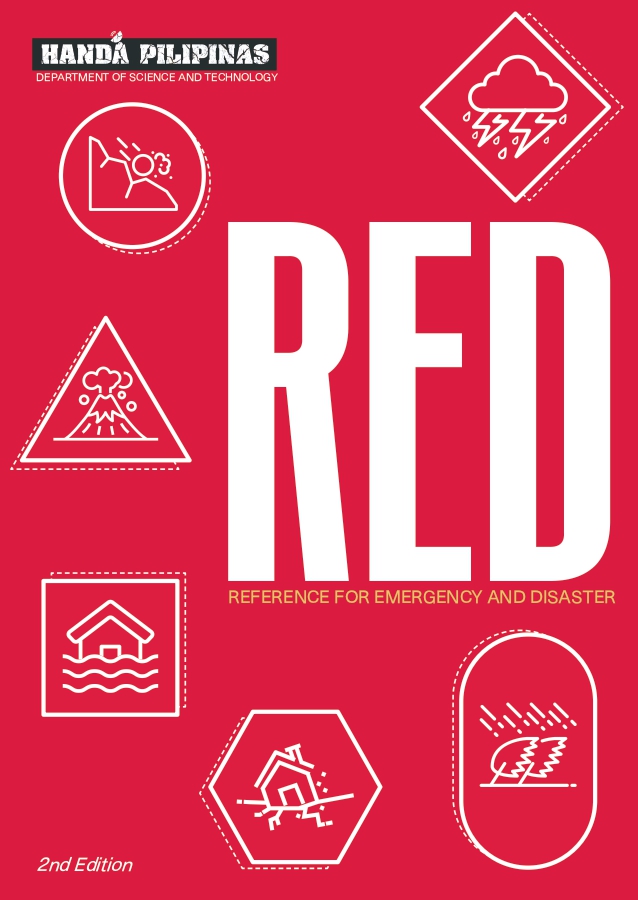- Details
- Hits: 4738
Science and technology information to improve people’s lives: This is the vision of the Department of Science and Technology’s Science and Technology Information Institute (STII) on the occasion of its 25th year of service to the nation this year.
“We want to bring greater attention to DOST’s role as provider of solutions to pressing problems in the country today,” STII Director Raymund Liboro said. “And the way to do this is for STII to step up our mandated duty as the bearer of good news from the Department.”
“Good news” pertains to positive, helpful S&T information that people can use to improve their quality of life, Liboro explained. “This means having the knowledge to uplift their present economic state and keeping themselves, their properties, and the environment safer through valuable and relevant S&T info.”
For 2012, STII is poised to lead the delivery of S&T information that address economic development as well as disaster preparedness and management, two key concerns of the Aquino government.
For the past 25 years, STII has relentlessly made S&T information more accessible and usable to Filipinos by creating information systems that reach out to more users via the Internet and other communications media. It has also repackaged hard science concepts, researches, and technologies into materials that are easy for common people to understand.
STII took on a more aggressive role in promoting S&T information for the past couple of years by actively assisting DOST agencies and offices in launching high-impact technology solutions such as the automated gateway transit system, nano-based clay water filter system, fortified food mixes, automated weather systems, and water hyacinth thresher, among others.
It also helped organize and promote DOST-wide major events such as the National Science and Technology Week and Regional Invention Contest and Exhibits.
STII will mark its 25TH anniversary on February 24, 2012 at the Arts in the City in Fort Bonifacio, Taguig City. The event will have the theme Inform to transform as STII’s way of celebrating its broadened role in S&T information delivery.
- Details
- Hits: 13691
The Technology Resource Center of the Department of Science and Technology will soon give a wider range of support to countryside entrepreneurs with the establishment of its Community Technology Business Incubation program this year. TRC Director Dennis Cunanan said that the program, an offshoot of DOST’s Open Technology Business Incubation (Open TBI), will be implemented in partnership with the DOST regional offices.
A technology business incubator, or TBI, is a program that helps entrepreneurial companies and start-up businesses to take off and develop through the TBI’s array of business support resources and services. Some of TBI services include business space for rent, marketing assistance, accounting/financial management assistance, links to partners, help with regulatory compliance, and others.
In addition to helping entrepreneurs start up their businesses, the DOST-TRC also helps overseas Filipino workers (OFWs) to start over through its free livelihood trainings to displaced OFWs. DOST, in partnership with Duty Free Philippines, likewise offers livelihood packages such as washing machines for Laundromat business or car tools for automobile service business through DOST’s Kabuhayan Shopping Program.
To celebrate its 35th anniversary this Feb. 23, DOST-TRC vows to continue its legacy of providing opportunities for the people.
Read more: DOST to offer business incubation services in provinces
- Details
- Hits: 4131
Elegant, trendy and chic—these just some of the adjectives thrown at the Philippine tropical fabric (PTF) outfits modeled at the recently heldBagong Habi, Salinlahi: Cutting Edge Philippine Textiles fashion show at the InterContinental Hotel Manila. Among the audience were executives, fashion designers and stakeholders of the textile industry who were dazzled at the seeming metamorphosis of indigenous fabrics into classy, eco-friendly fashion pieces.
Spearheaded by the country’s lead textile research and development agency, the Philippine Textile Research Institute of the Department of Science and Technology (DOST-PTRI),Bagong Habi: Salinlahilaunched fabrics made of native Philippine plants such as piña, abaca, and banana. The real revelation, meanwhile, was the introduction of newly-developed fabrics made from water hyacinth,saluyot, and maguey. All garments were dyed using natural plant sources, namely: mayana, guava, mahogany, achuete, indigo,talisay,and coconut husk.
The featured designers showcased a wide array of stylish garments created from tropical fabrics—from cocktail dresses to office uniforms, bridal pieces, and casual to formal wear for men and women. Special ethnic fabrics from different parts of the country were also incorporated in several designs to pay tribute to local craftsmanship and culture, namelyinabelof Ilocos,piñaandjusiof Aklan,hablonof Iloilo, andinaulof Maguindanao.
Excitement filled the grand ballroom as models flaunted their attires individually on the runway with accompanying Filipino music of various rhythms, beats and genres. Meanwhile, through audio-visual presentations, the audience learned of DOST-PTRI’s step-by-step processes in manufacturing various tropical fibers and natural dyes.

Philippine tropical fabrics seize the limelight in the recent Bagong Habi, Salinlahi: Cutting Edge Philippine Textiles fashion show by the Philippine Textile Research Institute of the Department of Science and Technology (DOST-PTRI). Held at the InterContinental Hotel Manila, the fashion show featured DOST-PTRI-developed fabrics, such as water hyacinth, saluyot, maguey, piña, banana and abaca styled into classy and elegant pieces by young and talented Filipino designers. The fabrics were naturally-dyed using native plant sources. They were also enzyme-treated for comfort and a softer drape. (Photo by Henry de Leon, S&T Media Service)
- Details
- Hits: 23353
To address the increasing number of water hyacinth clogging the metro waterways and elsewhere, the Department of Science and Technology has just unveiled its locally-developed solution: a machine that scoops up the plants to put them in good use.
Developed by engineers from the Department of Science and Technology’s Metals Industry Research and Development Center (DOST-MIRDC), the machine, called the Water Hyacinth Harvester, can collect and hold up to 25 kilograms of water hyacinth per load. When full, the harvester discharges the collected plants to a dumping site or an assisting barge.
The harvester mechanically removes water hyacinths using a specially-developed conveyor system. “Mechanically removing the plant is the better alternative because chemical methods are hazardous to plants and animals,” according to the research team. The harvester was launched Feb 15 near the banks of the Laguna Lake in C6 Road, Taguig City.
The Harvester, one of DOST’s technology solutions, is a collaboration between DOST-MIRDC and the Project Management Engineering and Design Service Office, with funding of the Philippine Council for Industry, Energy and Emerging Technology Research and Development.
According to DOST Secretary Mario Montejo, the Water Hyacinth Harvester prototype can still be modified and enhanced, depending on the need or the size and type of body of water where it will be used. “The DOST is very open to the adoption of the technology and also the improvement of the equipment,” he added.

Read more: DOST launches solution to the water hyacinth problem
- Details
- Hits: 3858
Department of Science and Technology Secretary Mario Montejo sent a quick response team yesterday to Negros Oriental to assess the damage in earthquake-affected areas. The team, headed by DOST-Phivolcs Chief Mariton Bornas and Senior Science Specialist Mabel Abigania, is composed of geologists, seismologists and information staff from the DOST- Philippine Institute of Volcanology and Seismology (DOST-Phivolcs). They arrived in Dumaguete City yesterday afternoon and will proceed to the Tayasan and Libertad areas in Negros Oriental to immediately conduct post-earthquake assessment.
The team will evaluate the extent of damage around the Negros-Cebu area, particularly the hazards caused by the earthquake such as landslides, liquefaction, ground rupture, tsunami and other developments in the areas near the epicenter. The team will also install instruments in gathering intensity reports to determine the strength of ground shaking in various areas.
Also, the team will use portable seismic monitoring equipment to accurately identify the position of the epicenter of the aftershocks, and identify and locate the fault plain that caused the main shock. The experts will likewise document the condition in the areas around the epicenter through pictures and video to help them better understand and study the incident.
Meanwhile, the information team will conduct on-site lectures on what to do during and after an earthquake and distribute information materials on earthquake and other hazards.
“We assure our countrymen, especially those in the earthquake-damaged areas, that DOST-Phivolcs is doing its best to monitor all events related to the Cebu-Negros earthquake,” Sec. Montejo stated. “We are doing this to deepen our own knowledge of what happened and continually provide our people with the relevant information they need to understand this earthquake event and how to cope with its effects.”
















